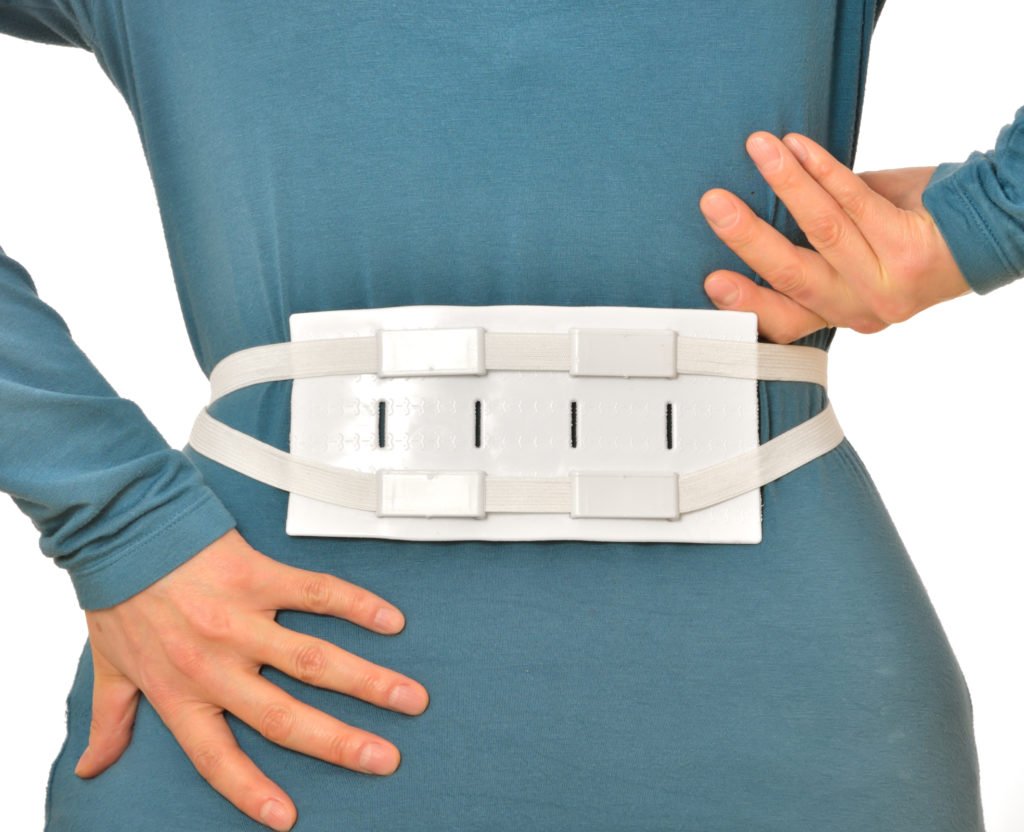Lumbar Stenosis
What is Lumbar Stenosis?

Lumbar Spine Stenosis is a condition that affects the lower back. It occurs when the spaces within the spine narrow which irritates the nerves in the spinal cord, causing pain, weakness, or numbness, most often in the lower body – buttocks, legs, and feet.
The word ‘stenosis’ comes from Greek, and it means ‘choking.’ When a bone or tissue grows in the openings in the spine, they ‘choke’ the nerves and puts pressure on them. Patients with lumbar stenosis often describe a numbing pain that worsens with walking.
What Causes Lumbar Stenosis?
Developing lumbar stenosis is often associated with aging and degenerative osteoarthritis. Facet joints may grow with time and compress the nerves within the spinal cord, causing lumbar stenosis. In some cases, spinal stenosis may also affect younger people due to spine injury.
In general, the causes of lumbar stenosis can involve the following:
- Bone overgrowth – the formation of bone spurs is prompted by damage to the spine bones caused by osteoarthritis
- Herniated disc – a damaged disc may leak, which can cause the nudeus (the fluid within the disc) to press on the nerves and cause pain in the lower back
- Thickened ligaments – the cords that hold the spine together may thicken and become stiff with time and therefore irritate the nerves within the spine
- Tumors
- Spinal injuries
What are the Symptoms of Lumbar Stenosis
Often, symptoms of lumbar stenosis do not show until the disease has progressed significantly.
Lumbar and cervical pain are the most common symptoms of lumbar stenosis as it progresses. Other symptoms also accompany lumbar stenosis:
Pain in the Neck and Arms
Stenosis pain can radiate to the neck, shoulders, or arms. It may be felt as a burning sensation. Some patients feel weakness in their hands. Some patients also feel numbness and tingling in the arms.
Problems with Your Gate
With spinal stenosis, you can experience changes in your gait while walking. This varies based on where the stenosis is located in your spine. As the condition progresses, changes in your gait may become more noticeable.
Cervical spinal stenosis affects the neck and can cause difficulty with balance while walking. This is because of spinal cord compression. You might also notice weakness in the thighs and leg muscles- especially in the calves and quadriceps.
Sciatica Pain
Lumbar stenosis can cause pain or weakness along the sciatic nerve. The condition is caused by compression of nerve roots in the lower back. Usually, it is only in one leg, but both legs can be affected in rare situations.
Symptoms include pain in the buttocks, thigh, lower back, calf, foot, or whole leg. Pain, weakness, numbness, and pins and needle sensations are also common with sciatica pain.

How is Lumbar Stenosis Diagnosed
The diagnosis of lumbar stenosis typically involves:
- An interview with the patient, during which the doctor will ask you to describe your symptoms. You will be asked questions such as: where do you experience the pain the most, when did you first start to feel the symptoms, have you had any back issues/conditions before, have you ever had any spinal injuries, etc.
- A physical examination – the doctor will check the range of motion, areas of tenderness, etc.
- An MRI scan or a CT scan
What Can I Do to Prevent Lumbar Stenosis
Exercise
Exercise is essential to keep your spine healthy. An exercise plan for lumbar stenosis can help to build endurance, increase and maintain flexibility in the spine, and help to strengthen abdominal muscles that can help to support the spine. Physical therapists are excellent for developing the right exercise plan that can work for you.
Stretching
Stretching can help to maintain and improve range of motion. It can also help prevent or slow the progression of lumbar stenosis.
Other therapies that can help improve flexibility include relaxation exercises, water exercises, and holistic therapies. Again physical therapists can develop a care plan tailored to your specific condition.
Good Posture
Maintaining good posture throughout your day and during activities can help avoid injury to the spine. This includes when lifting heavy objects or if you are sitting at a desk working on a computer every day. Posture correction exercises can help you learn the correct techniques.
How is Lumbar Stenosis Treated?
In most cases, the symptoms become less severe or stop altogether as soon as the patient gets some rest. Over-the-counter pain medicine, proper exercise, and physical therapy benefit lumbar stenosis.
However, suppose the symptoms worsen with time and make it impossible for the patient to function normally. In that case, your doctor may prescribe spinal shots of corticosteroid (epidural injections), a medicine that reduces inflammation. Injections are also effective for pain as they inhibit pain signals from the spine to the brain.
It is also possible to remove the bone overgrowth that pressures the spinal nerves surgically, but it depends on where it is located and how much it affects the patient.
Concerned About Lumbar Stenosis? Our Spine Surgeon in Palm Beach County Can Help!
Dr. Hepler is a leading orthopedic spine surgeon who is fellowship trained in complex spinal surgeries in pediatrics and adults.
Lumbar Stenosis is a common condition treated by Dr. Helpler. We have two convenient clinics to serve you:
Need an evaluation for Lumbar Stenosis? Let Dr. Hepler help! Contact us to schedule your appointment today!
The material contained on this site is for informational purposes only and DOES NOT CONSTITUTE THE PROVIDING OF MEDICAL ADVICE, and is not intended to be a substitute for independent professional medical judgment, advice, diagnosis, or treatment. Always seek the advice of your physician or other qualified healthcare providers with any questions or concerns you may have regarding your health.
